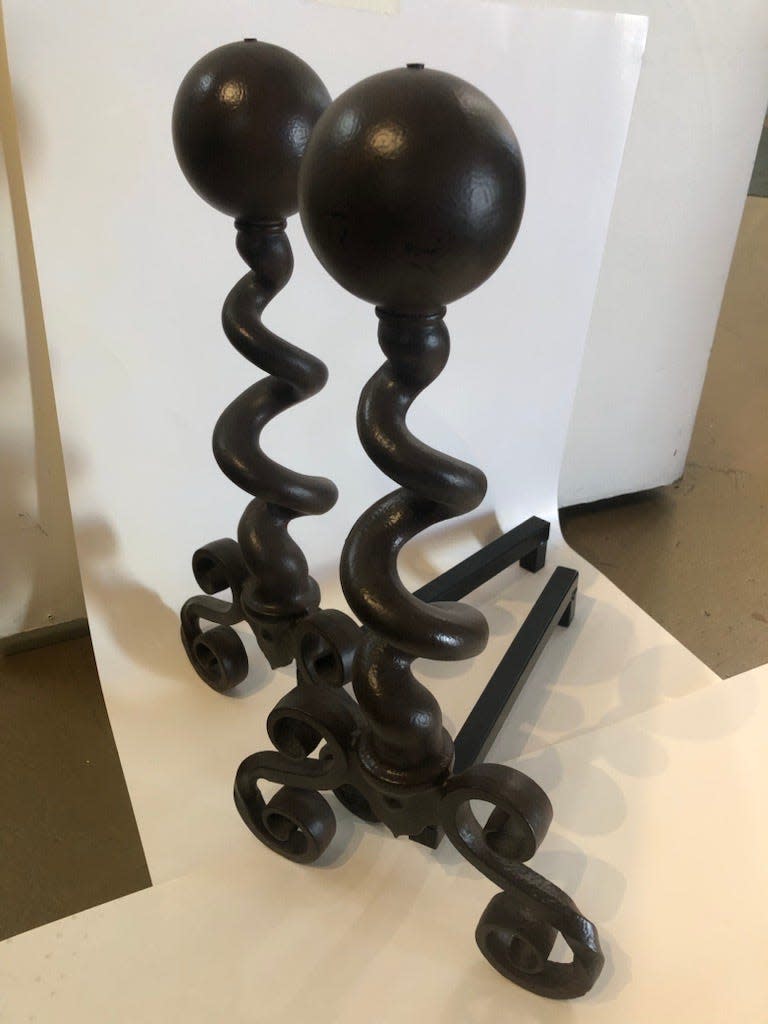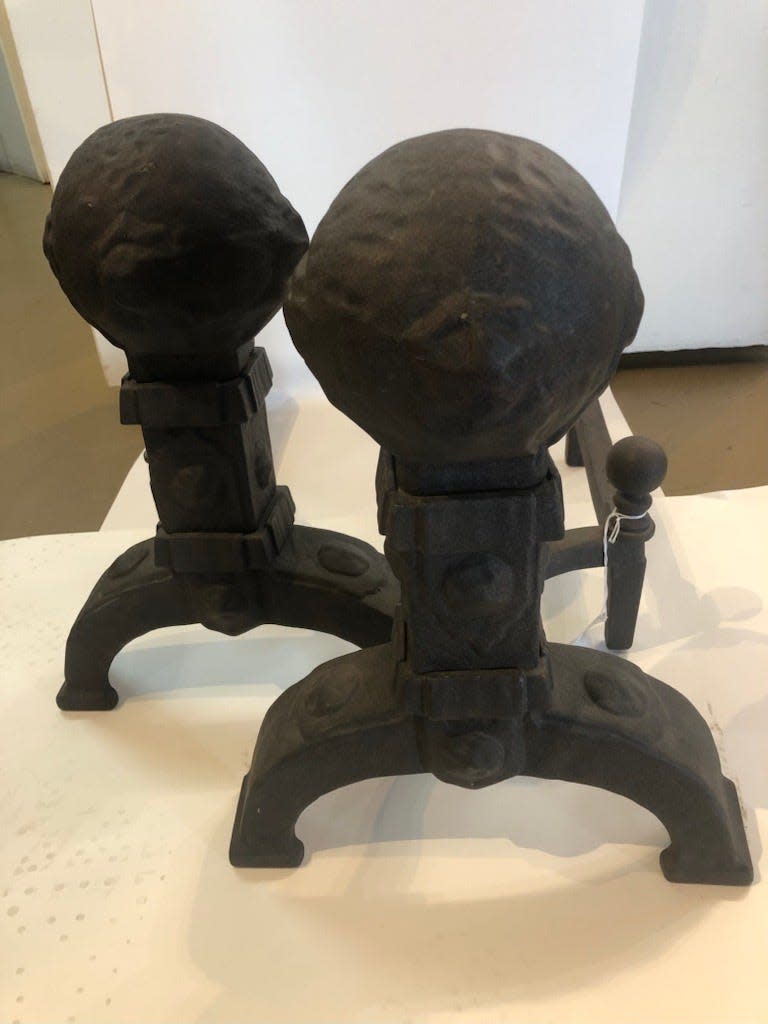Antiques: Andirons are both functional and decorative

With the soothing days of fall in front of us, it's time to consider something else besides keeping cool.
While the pumpkin season may be over, apple pie and eggnog are on the horizon, and so is a crackling fire. Here in the desert, it can get chilly, and many homeowners will soon begin looking to their fireplaces to provide warmth. If you're one of those, take a look at the front of your hearth and consider something you usually ignore: your andirons. They have a long history as well as an interesting name, so pour another cup of cider and noodle the following.
For starters, andirons also go by a much better name: fire dogs. Their basic purpose is two-fold: they allow air to circulate throughout the fire and prevent flaming logs from rolling into your living room and thus burning your house down. Unsurprisingly given their name, they're typically made of cast iron, a type of super-heated pig iron with a variety of additives.
In the lean days of 16th century England, andirons were first of relatively simple design, meant to be functional with little regard for decoration. However, with the arrival of the Renaissance, artisans began to use bronze, enamel, and even silver to ornament andiron posts. Some of the most famous artists in continental Europe put their hand to designing andirons, and in France, the art form reached its peak under Louis XIV at the dawn of the 18th century.
Nonetheless, all things have their season, and soon the functionality of andirons was largely replaced with built-in metal grates that kept the air moving. Still, there were other reasons for their use. Andirons within andirons allowed for smaller fires, and some included various hooks and loops that allowed for grills to be set upon or cooking pots to hang. A few, including one in the Gourmet Museum in Belgium, have built-in baking drawers that allowed for the smell of fresh bread to permeate the household. I wouldn't mind having one of those.

In colonial America, the fireplace was the center of the home. Here the family stayed warm, had light for reading and a ready place to make their meals. The earliest domestic andirons were simple with little more than brass ball decorations, but more elaborate andirons with lemon or urn-shaped toppers began to appear prior to the Civil War.
As the century progressed, so did andiron decoration as animals, soldiers and even political luminaries such as George Washington began to appear as guardians of the fireplace. With the dawn of the 20th century, influences from the arts and crafts period took hold and the trend returned to a more rustic look with hand-hammered features. Today, andirons have become largely a decorative element and anything goes if it's in keeping with the room's decor.
Despite their somewhat ungainly size and weight, there are a surprising number of andiron collectors out there, especially in colder climates where homes often include a number of fireplaces. When properly coordinated, a combination of andirons, fireplace screens and tools can become a focal point of any room.
Flea markets, garage sales, and antique galleries like ours are where you find them, and all but the most exotic will be modestly priced. If your fireplace is currently unadorned, a pair of snazzy andirons might be just the thing you need.
Mike Rivkin and his wife, Linda, are longtime residents of Rancho Mirage. For many years, he was an award-winning catalogue publisher and has authored seven books, along with countless articles. Now, he's the owner of Antique Galleries of Palm Springs. His antiques column appears Sundays in The Desert Sun. Want to send Mike a question about antiques? Drop him a line at info@silverfishpress.com
This article originally appeared on Palm Springs Desert Sun: Antiques: Andirons are both functional and decorative

